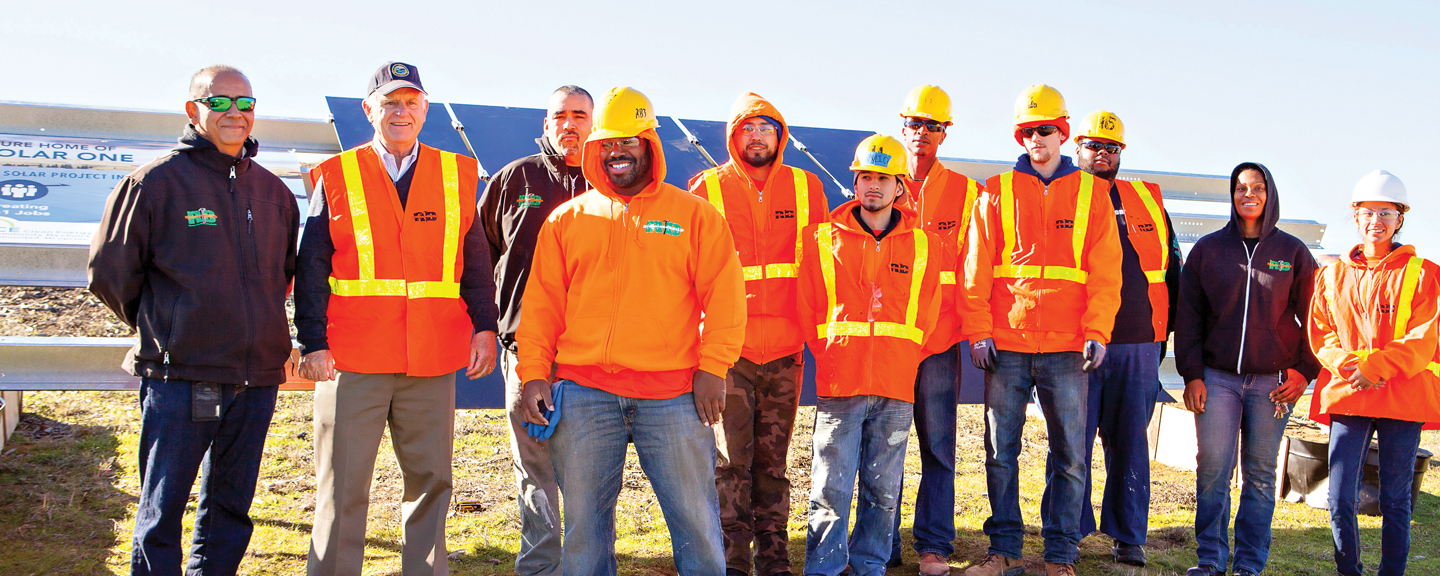Building Local and In-State Renewable Projects
Thinking Globally, Building Locally
Through our Feed-In Tariff and Power Purchase Agreement projects, MCE has installed over 19 megawatts (MW) of renewable energy projects within our member communities. While we’re proud of this accomplishment, we’re not stopping there. An important part of our strategy to build more local projects involves offering customers the option to make all of their electric service 100% California renewable energy. Half of the Deep Green premium (about $4 more than Light Green per month for the average household) goes toward building more renewable energy projects in our communities. This creates a positive feedback loop between those able to pay a little more for their electricity, the increasing demand for more renewable energy sources, and green-collar job seekers.
Local Incentive: Feed-in Tariffs
MCE’s Feed-In Tariff (FIT) program offers attractive, above-market pricing for eligible local projects. In short, “if you build it, we will buy it.” After filling the available queue, MCE’s FIT has recently expanded. It now offers a total program capacity of 45 MW on a first-come, first-served basis for projects sized up to 5 MW. There are additional financial incentives for smaller projects to encourage urban infill and taking advantage of using land in multiple ways. Several small scale, local projects have been built through MCE’s FIT program. These projects relied on local labor, workforce development partners, and trade unions.
MCE Solar One, Power Purchase Agreements, and Public-Private Partnerships
Power Purchase Agreements and Public-Private Partnerships are exciting frontiers since Community Choice Aggregation Agencies – as public organizations – can engage the private sector to leverage additional community benefits. MCE led the development of MCE Solar One, a 10.5 MW project located at a 60-acre remediated brownfield site in Richmond. The project was built with a 50% local hire requirement in a community with high unemployment rates and many underserved communities. Local non-profit partner, RichmondBUILD (staff members pictured above with Richmond Mayor Tom Butt), which focuses on developing skills in the high growth construction and renewable energy fields, trained students over a two-year period before breaking ground on the project in order to ensure access to the jobs by a wide range of local residents. All RichmondBUILD participants come from low income households, 95% are people of color, and over 30% have been previously incarcerated.
Training, retooling, and hiring a local workforce guarantees that associated benefits of new energy projects reach vulnerable community members. The project also hired union workers from the United Brotherhood of Carpenters and Joiners of America (UBC); Laborers Union (Local 152 and 324); International Brotherhood of Electrical Workers (IBEW) (Local 302 and 1245); Operating Engineers (Local 3); and Steamfitters (Local 342).
Roadmap for an Inclusive Green Collar Economy
If a local renewable energy project is located within MCE’s service area, the seller must certify that all employees hired during construction are paid at least prevailing wage, and a minimum of 50% of the construction work-hours from its workforce (including contractors and subcontractors) are provided by permanent residents who live within the same county. For projects in Contra Costa County, the seller must certify compliance with MCE’s project labor agreement (PLA) and the Letter Agreement between MCE and IBEW Local 302. For projects in other MCE communities, applicants are required to enter into PLAs of similar scope and requirements.
At the statewide level, larger-scale efforts for new development help to distribute the wealth even further. MCE has committed approximately $2 billion to support over 900 MW of new California renewable energy projects. Around 120 MW represent short-term contracts that accelerated the delivery of energy, bringing projects online several years earlier than anticipated. The majority of these projects have created job growth in the Central Valley and the inland corridor, investing in communities where the median household incomes can average $30,000 to $40,000 annually.






